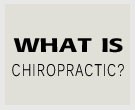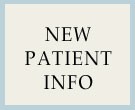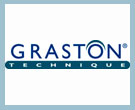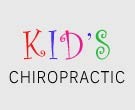Massage therapy is a complementary, not alternative, therapy to chiropractic!
Our licensed massage therapist utilizes several types of massage techniques depending on the individual needs of the client.
Our clients seek massage therapy services to address a variety of issues, including neck and back pain, headaches, leg and foot pain, shoulder and arm pain, stress, insomnia, and general tension. We strive to maintain an environment in the clinic hat is welcoming and comfortable for people of all ages, abilities, and occupations.
- Cause changes in the blood. The oxygen capacity of the blood can increase 10-15% after massage.
- Affect muscles throughout the body. Massage can help loosen contracted, shortened muscles and can stimulate weak, flaccid muscles. This muscle "balancing" can help posture and promote movement that is more efficient. Massage does not directly increase muscle strength, but it can speed recovery from the fatigue that occurs after exercise. In this way, it can be possible to do more exercise and training, which in the end strengthens muscles and improves conditioning. Massage also provides a gentle stretching action to both the muscles and connective tissues that surround and support the muscles and many other parts of the body, which helps keep these tissues elastic.
- Increase the body's secretions and excretions. There is a proven increase in the production of gastric juices, saliva, and urine. There is also increased excretion of nitrogen, inorganic phosphorus, and sodium chloride (salt). This suggests that the metabolic rate (the utilization of absorbed material by the body’s cells) increases.
- Affect the nervous system. Massage balances the nervous system by soothing or stimulating it, depending on which the individual needs effect at the time of the massage.
- Enhance skin condition. Massage directly improves the function of the sebaceous (oil) and sweat glands that keep the skin lubricated clean, cooled. Tough, inflexible skin can become softer and suppler.
- Affect internal organs. By indirectly or directly stimulating nerves that supply internal organs, blood vessels of these organs dilate and allow greater blood supply to them.
Types of Massage:
Massage Therapy for Health and Fitness
Medical Massage
Trigger Point Therapy
Myofascial Release
Deep Tissue Massage
Prenatal Massage
Swedish Massage
Sports Massage
Chair Massage
The Physiological Effects of Massage:
Knowing about the physiological effects of massage makes it possible to better understand the health and fitness benefits of massage. What takes place under a massage therapist’s hands has profound importance for those interested in health and fitness — in “tuning up” their bodies. In every sport or form of exercise, massage can help. By helping to reduce physiological fatigue and aid recovery from the exertion of working out or playing, massage enables training better, with longer, more effective workouts, thus facilitating better performance and preventing injury.
The people of ancient Mediterranean civilizations knew this. After bathing and exercise, they included a full body massage. The ancients understood that education involves equal development of mind and body. The modern public’s interest in physical fitness, holistic health, wellness, and human potential represents a bid to revive a time-honored philosophy.
For most people embarking on a fitness program, often the spirit is willing but the flesh is not. When regular exercise is begun almost every part of the body changes. Of interest to massage therapists is the way blood vessels become more intricate in order to meet the body’s demand for more oxygen, to supply more nutrients, to permit more elimination. This takes time. While the muscles are getting into shape, they have trouble getting enough oxygen and nutrients, and wastes back up and stagnate. Unfortunately, many exercise programs regard aches and pains as the inevitable price to be paid. This is simply not true because massage can be used as the Greeks and Romans used it — to increase endurance, control fatigue, and feel better as part of a regular health program.
Massage acts to disperse the accumulated by-products of muscle action that irritate muscles and nerve endings. Lactic and carbonic acids build up in muscle tissue shortly after exercise begins. These acids are waste products that contribute to causation of the pain and occasional cramping that exercisers, athletes, dancers, etc. suffer during and/or after workouts or performing. These acids are formed when the glycogen stored in the liver and muscles is burned to produce the energy expended during exercise. The acids must eventually be reconverted to glycogen and stored again, or drained out via the lymph and circulatory systems. Pain and fatigue persists until this process of reconverting or excreting is completed. Massage can help eliminate the irritation caused by these wastes, thus increasing muscle recovery rates. When massage has been substituted for rest, an increase from 20-75%, even 100% muscle recovery has been recorded. For example, this is why boxers are massaged rather than rested between rounds.
Joints are critical to exercise because joints are moved by the muscles to produce movement. All joints are complicated, and their parts have a way of settling and stiffening when not used. A sluggish, numbed feeling in the joints discourages exercise. A massage therapist counteracts this by using massage strokes and passive movement to release the muscle tension and free the connective tissue found around the joints that can bind the joints.
Massage also aids recovery from soft tissue injuries such as sprains and strains. This is possible because the growth and repair of tissue are accelerated by efficient circulation in the injured areas and appropriate stimulation of the healing tissues. Many soft tissue injuries are not serious enough to cause one to visit a doctor or hospital for treatment, or are only treated with some first aid, but still cause some discomfort and disability. Massage therapy can often help speed, improve recovery, and reduce discomfort from such mishaps. In this way, massage helps bridge the gap between common neglect of injury and major medical intervention.
Increased health awareness has also increased nutrition awareness. The most carefully planned diet is partly wasted if blood vessels are not developed and open so that nutrition can reach the cells. Massage can aid internal nutrition rates by improving circulation.
The relationship of stress and illness is of interest to anyone maintaining their health. We all have stress in our daily lives relating to work, family, environment, society. Mental tensions, frustrations, and insecurity are among the most damaging. Stress causes the release of hormones that create vasoconstriction — vessel shrinking — and reduced circulation. Affected by stress, the heart works harder, breathing becomes rapid and shallow, and digestion slows. Nearly every body process is degraded. Psychosomatic studies show how stress factors can cause migraines, hypertension, depression, some peptic ulcers, etc. Researchers have estimated that 80% of disease is stress related. Soothing and relaxing massage therapy can help by counteracting stress effects.
Massage has a definite psychological effect. Since massage animates the tactile sense, the body’s primary sense, it brings people into the here and now and away from tension generated by constant preoccupation with problems. In addition, loosening of muscle tension or “armoring” — the physical counterpart to how we defend and protect ourselves from psychological pain — can lead to freeing of repressed emotions.
Users of massage therapy as a healing tool quickly realize that they have found a form of drugless therapy. Headaches, insomnia, digestive disorders including constipation and spastic colon, arthritis, asthma, carpal tunnel syndrome, sinusitis, and minor aches and pains are some of the problems that can respond to massage therapy. Massage can have an excellent effect on nervous people who have been dependent on their pharmacy for rest and relaxation.
Simply stated, the foundation stone of the therapeutic effect of massage is what Hippocrates, the Father of Medicine, defined as vies medicatrix naturae, or the body’s natural recuperative powers, the life force. Massage therapy essentially promotes health by boosting the body’s own processes.
Disclaimer: The preceding is to provide information about massage therapy and the benefits that may be derived. It is not intended to claim a cure for any disease or condition. It should not take the place of medical advice or treatment.







